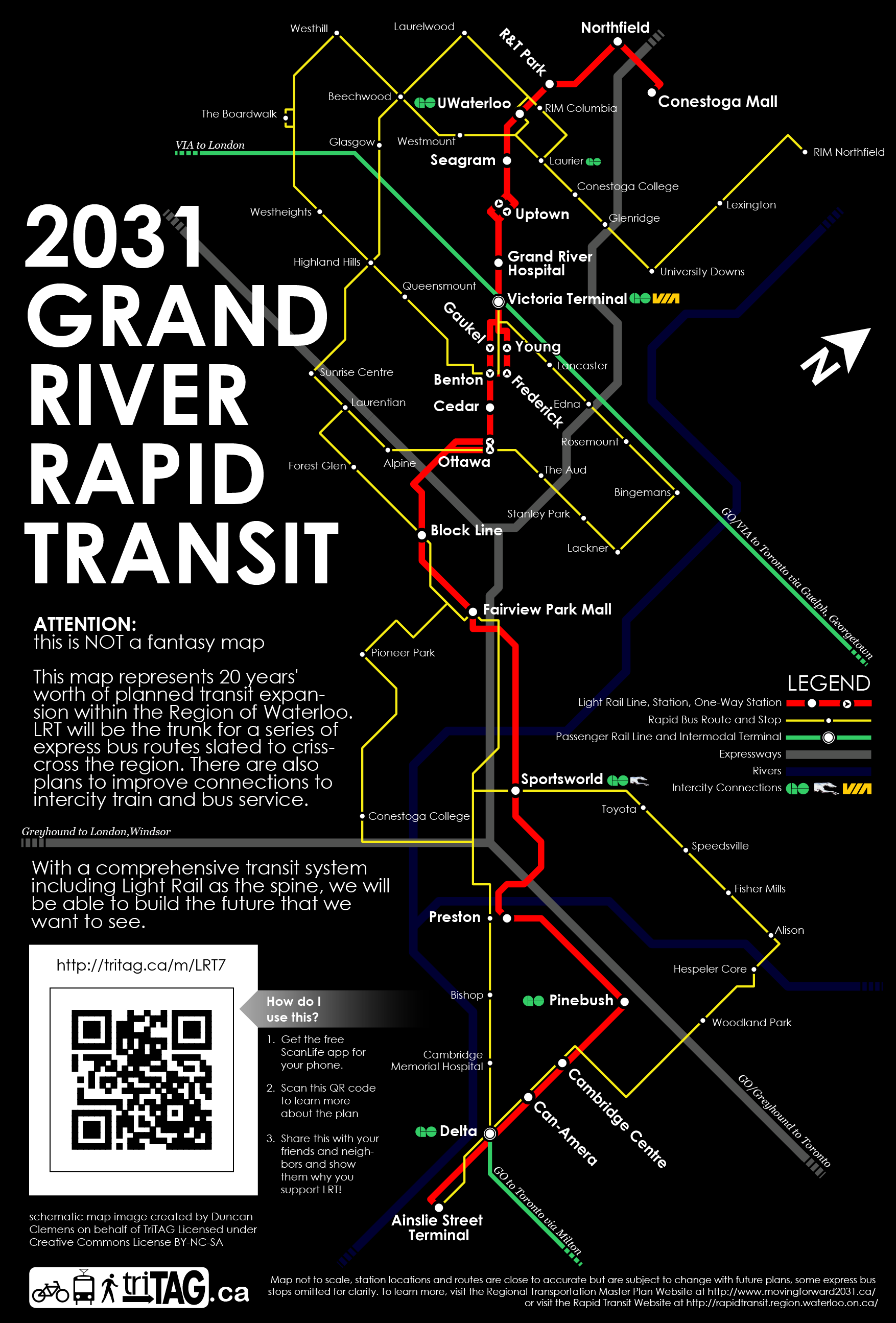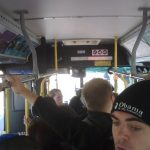
Map designed by Duncan Clemens.
On June 15, 2011, Regional Council will be voting on whether to approve Light Rail as the preferred option for rapid transit in the Region of Waterloo. As we find ourselves on the eve of one of the most important votes in the region’s history, it is important to remember that our Councillors are not only voting to fund a light rail transit line running from Conestoga Mall in Waterloo to Fairview Park Mall in Kitchener, but also on a funding strategy for the Regional Transportation Master Plan.
The RTMP provides a framework for transit funding improvements for the next 20 years, with steady annual increases in the per-capita level of funding for transit. By 2031 funding for transit operations will have tripled over current levels, and the modal share for transit is expected to triple to 17%. The document includes a guide for planned service increases and improvements, which will be reviewed as each year’s plans are put into action.
This plan approved by Council last year includes plans to implement a number of cross-corridor express routes which will supplement and feed passengers into the central rapid transit spine. In fact, the first of these new iXpress-style bus routes is due for implementation this September, and will run from the university district to Forest Glen Plaza along Ficher-Hallman Road. A number of other trunk express bus routes will soon follow on King-Coronation, University Ave, Ottawa Street, Maple Grove Road, Highland Road, and Victoria Street North.
Although not shown on this map, the RTMP also includes plans to restructure local bus routes in the suburbs so that they are more direct and reliable. Routes 7, 12, and 29 are all seeing routing changes this year that will improve on-time performance and create more direct routes between origins and destinations.
Also arriving this year is GO train service from Kitchener to Toronto at the existing Kitchener VIA station. The Region has also purchased lands at the corner of King and Victoria to construct a new inter-modal terminal for GO, VIA, LRT, GRT, and other intercity coach services all in one location.
Cambridge is also not being left out of tomorrow’s vote. Regional staff are recommending that the region put forward $1 million a year to implement transit-supportive strategies in Cambridge to increase ridership. In addition, staff are recommending that Phase 2 from Fairview to Ainslie begin its project assessment in 2014, that land be purchased for Phase 2 as soon as feasible, and that a location for an inter-modal terminal for GO rail service and GRT be explored.
The agenda for tomorrow’s council meeting, including the details of what is being voting on, can be found at this link. If you would like to attend, the public Council session will begin at 7pm at 150 Frederick Street in Kitchener (the building with the orange roof). If you want, you can RSVP to the Facebook event here.
If you can’t make it, we will be covering the event live on Twitter with #LRTvote, and it will be broadcast on Rogers Cable 20.
Read More »






